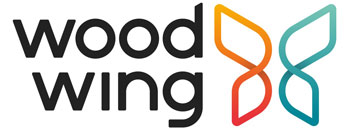
After key workers, one of the biggest heroes of the pandemic has been technology. In all sectors, organisations with their digital ducks in a row have adapted and advanced during lockdown more successfully than their analogue peers.
Some businesses report implementing a decade of digital transformation in a matter of months, thanks to the pressure of the pandemic. This digital transformation won’t just see these businesses through the current crisis but will pave the way for greater efficiencies and lower costs in the future.
As lockdown lifts, don’t take your foot off the pedal of digital transformation. Implementing the right software can transform your business at what is still a challenging and critical time for publishers.
Efficiency is essential
The prevalence of free ungated content online has changed consumption patterns. This has forced publishers to review their business model and revenue generation methods, or face growing consumer demands and shrinking resources. In this landscape, efficiency has gone from a nice-to-have to a survival essential.
Fortunately, as technology has changed how society consumes content, it’s also changed how publishers can produce it. Software can offset the financial and operational challenges associated with changing consumer patterns. Software that increases efficiency, automates processes and improves collaboration is the flipside of the digital coin.
The dawn of channel-neutral content
The multichannel publishing environment is another area where publishers can make gains.
Content can be simultaneously published in print and on the web, broken down into bitesize snippets for social, even turned into audio-visual content. But often processes aren’t optimised to make this happen effectively.
The industry knows it needs to move away from print-centric workflows but we often see publishers trying to amend existing processes to fit the new multichannel landscape, instead of redesigning processes to make them truly fit for purpose.
To overcome this situation – which actually perpetuates a print-first, repurpose-later mindset – publishers need to embrace the concept of channel-neutral content – actively creating content for multiple channels (or even brands) simultaneously.
Software can be transformative in this context by allowing creators to write their story, attach and automatically render media for different channels, and route it to numerous print and digital destinations.
Doing more with less
The challenges publishers face – competing with free content, managing multiple channels – are often compounded by reduced staff resources. This leaves many publishers needing to do more with less.
In this context, digital transformation is essential. Harnessing new technology can help publishers continue to deliver quality outputs, even with fewer people, by:
- automating repetitive and error-prone manual tasks
- standardising and optimising workflows, speeding up go-to-market
- merging teams currently working in separate silos
One example of this is Digital Asset Management. DAM eradicates the ‘death by a thousand cuts’ of mismanaged images, documents, logos and more.
Using FTP to share content with stakeholders. Searching for assets scattered across email, cloud drives and local storage. Email ping pong for amends and approvals... If your staff lose a minute each time they need to track down an errant asset, or five when they upload artwork to an FTP site, cumulatively it adds up to days of lost time each month.
Many publishers put up with this situation because they don’t know how – or don’t have time – to fix it. But making time now can deliver significant time savings in the future.
The end of the office?
The jury’s still out on whether we’ll see a more permanent shift towards hybrid working after our enforced experiment with home working. But the pandemic has highlighted many advantages associated with more flexible working practices, all facilitated by technology.
Hybrid working opens your business up to a wider world of talent, not just those within commutable distance of your HQ. It also provides the possibility of outsourcing to more cost-effective global suppliers, and more agile use of freelancers alongside staff members.
Starting your digital transformation journey
Digital transformation will look different for different publishers. But regardless of the approach you take, now’s the time.
Here are some next steps to get you started:
- Identify bottlenecks, pain points and manual processes in your current systems – these are key areas where you could make cost savings and productivity gains
- Look to the future - think about where you want to be rather than just where you are now, and develop a digital transformation roadmap for the future
- Explore your technology options - editorial workflow, Digital Asset Management, and media planning software are particularly relevant to publishers
- Make sure you plan to use cloud technology for ultimate flexibility in the new world of remote work and outsourcing
- Remember, software delivers ROI when people use it, so look for intuitive software that isn’t overly complex for end-users
The pandemic has shown that digital transformation is possible when there’s a will to make it happen. To maximise your chances of success in the current challenging landscape, maintain momentum even as lockdown eases.

About us
For more than 20 years, WoodWing has been a leading software provider for publishers, helping them to optimise their content production for magazines, newspapers, books, websites, and other channels.
Our solutions – WoodWing Studio and WoodWing Assets – are tried and tested by the world’s leading publishers and organisations with complex content creation demands such as Hearst, Forbes, and Axel Springer. WoodWing sits at the heart of your content processes, enabling you to take a content-first approach to storytelling and overcome challenges around improving speed to market, workflow efficiency, and publishing to different channels.
Together with our partners, we help our customers tackle the challenges of ever-changing content environments, to ensure your business can continue to evolve and stay meaningful in every channel.
Email: info@woodwing.com
Website: www.woodwing.com










